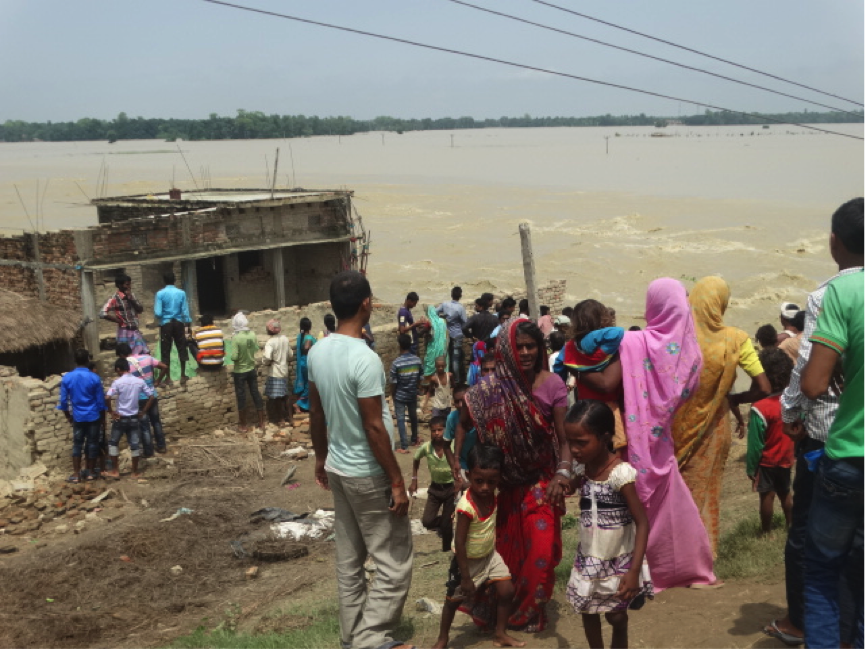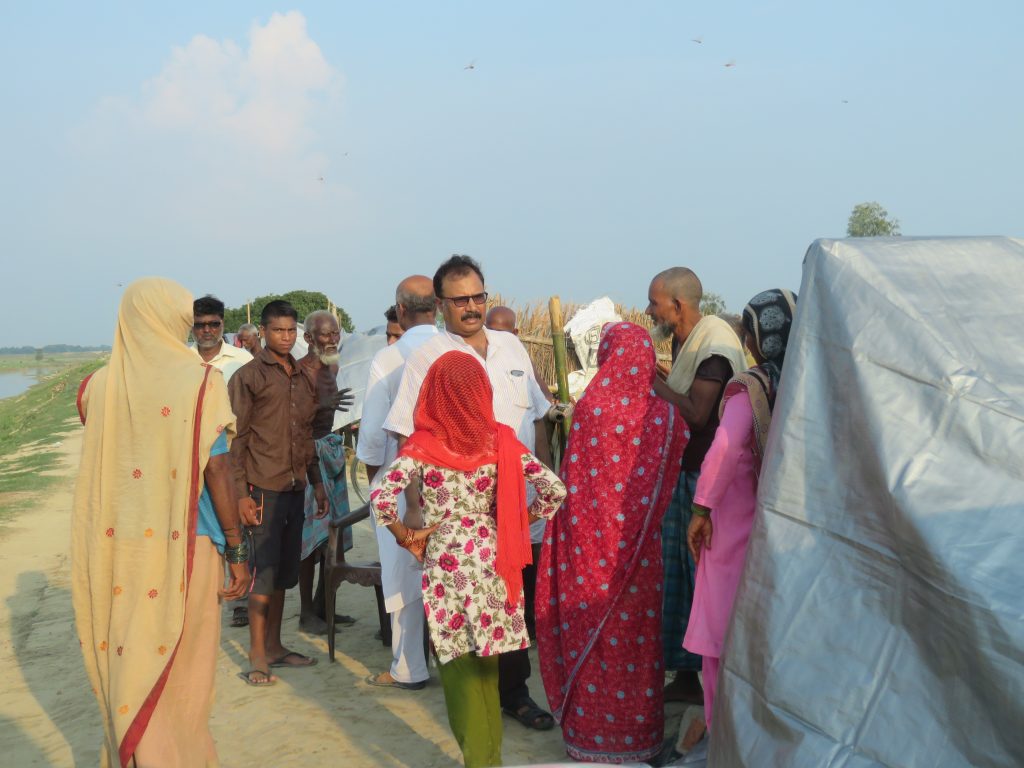
Tell us about the current flood situation?
The current situation remains very challenging. The floodwater has receded from the high land area, the low lands remain flooded though. The water there is expected to recede in 20-30 days, provided there is no more rain. People are using country boats to move from one village to another or to go to markets, health centres, colleges/schools and government offices.
Give us a sense of the damage caused by floods in Darbhanga district?
While over 17 million people are affected in the state of Bihar, an estimated 2.1 million are affected in Darbhanga alone. 14 blocks of the district are severely hit, among them are Ghanshyampur, Goura Boram, Tardih, Kiratpur, Kusheshwar Sthan. 37 people have lost their lives, while more than 9200 families have been displaced. People are taking refuge on the roadside, at high lands, schools and Community centres.
Many people, particularly Dalit, Mahadalits and those living near embankments have lost their homes (Semi pucca (solid) & mud thatched houses), household assets, and important/legal documents. Floods have caused a large amount of damage to infrastructures such as roads, schools, community centres and Anganwadi Centres (mother and child care centres).
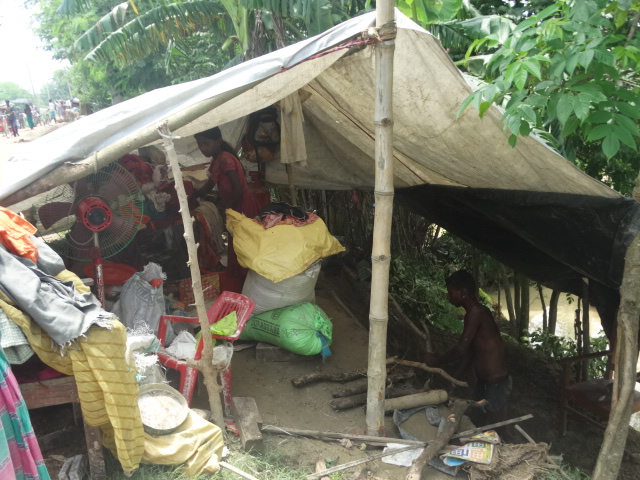
Displaced families are living in difficult conditions
What are the difficulties the flood survivors are facing currently?
The affected areas are witnessing a severe lack of shelter and WASH (Water, Sanitation and Hygiene) facilities. 87% of the hand pumps, which are the major source of drinking water in the area, are submerged. A majority of them are out of order. Sanitation & hygiene conditions remain poor due to open defecation in most of the area. Toilets are damaged or submerged. Waste disposals & debris management is a big challenge in the flood affected areas too, posing a risk of epidemic outbreaks.
Children are unable to attend schools, as the buildings are either damaged or are being used as temporary shelter by flood survivors. There is no supplementary food available for even pregnant, lactating mothers and children (SAM/MAM).
How are relief efforts progressing?
We have completed the damage assessment as well as the survey of affected population for shelter kit & hygiene kit (2000+2000), pregnant/lactating women & children (900). The procurement of relief material is almost completed and we have begun distributing shelter kits hygiene kits and supplementary food materials. Repairing, raising of 162 Hand pumps and chlorination of more than 210 Hand pumps and 245 Households surroundings are also underway.
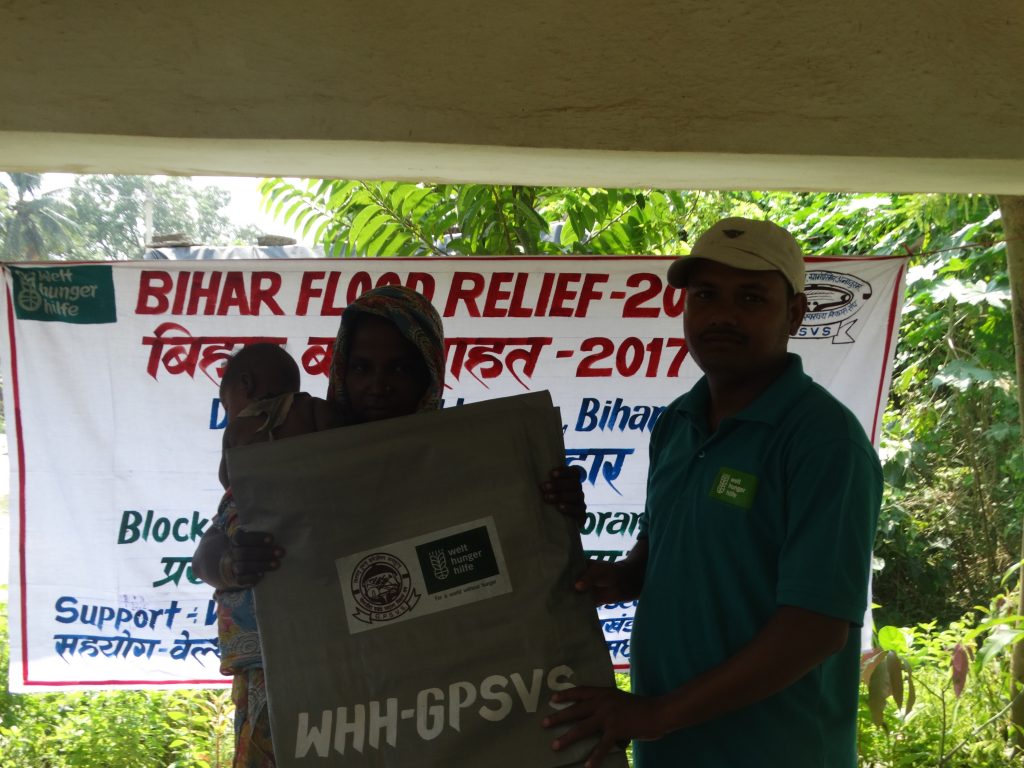
Shelter kits being distributed
How is GPSVS supporting the flood-hit people?
We have a team of dedicated volunteers, who have experience in disaster response. They are regularly travelling to the affected villages to do the relief work and assess the needs. They have been meeting local government officials regularly and are in touch with Panchayati Raj Institution (PRI) representatives and other stakeholders.
We also have an ERT (Emergency Response Team), which supports the volunteers to undertake proper relief work with accuracy and transparency at all levels.
GPSVS team validated the surveyed families, then distributed coupons for relief material provided through WHH’s (Welthungerhilfe) support: Shelter Kit, Hygiene Kit and supplementary food materials for children, pregnant women and new mothers.
We are also coordinating with government officials for food supplies and to conduct Health & Hygiene camps on regular basis for the affected people and cattle.
During the distribution, we are following the norms of Core Humanitarian Standards in selection, distribution and monitoring.
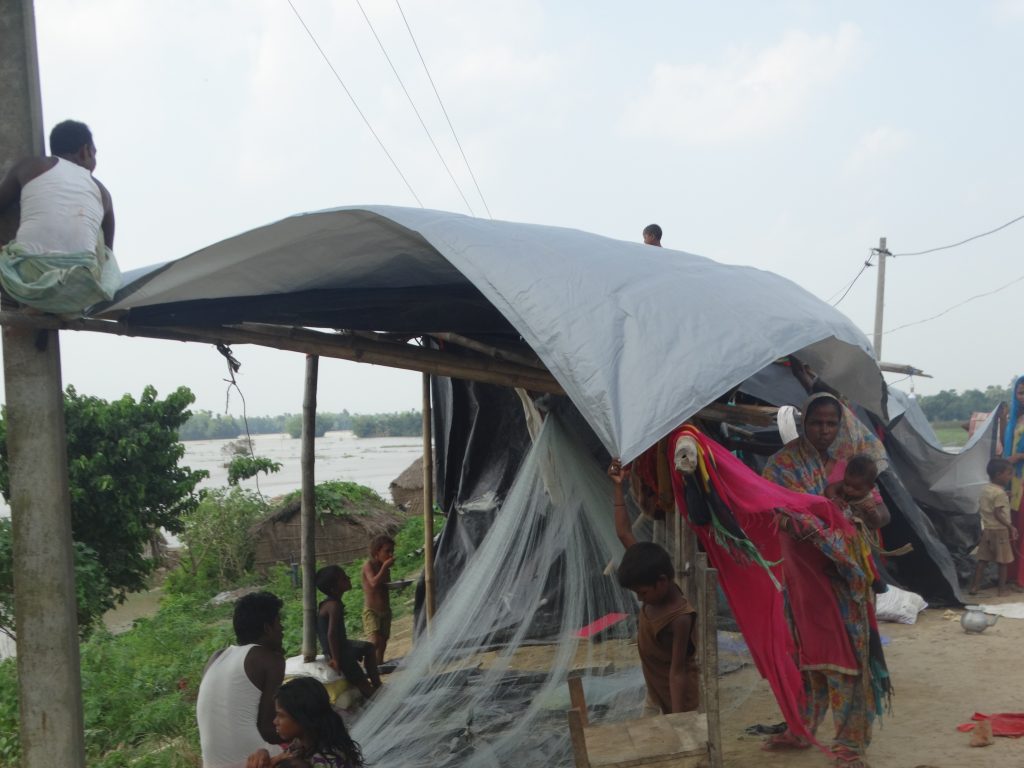
People using tarpaulin to make a temporary shelter
Are you facing any challenges in providing relief? If yes, what?
Accessing the affected areas is not easy, as the roads are damaged and one has to spend more time on local boats to reach the villages. While our relief work is focussed on WASH, shelter and providing relief to children, pregnant women and lactating mothers, people are demanding more. They want other relief materials like medicine and fodder for animals and support in rehabilitation work. The local authorities and Panchayati Raj representatives have urged us to cover more households in the relief work.
How huge is the impact of these floods on farming and other sources of livelihoods? What is your assessment?
Floods have washed out more than 80% of the existing paddy crops in approx. 12000 acres of land. Vegetable crops are completely damaged. Agro based livelihood options are fully collapsed. Most of the flood affected households are sharecroppers or agriculture labourers and they have lost their farm based livelihood. Many of the community members believe they will have to either migrate to other areas for a job or take a loan for the next cropping season. The next crops are wheat, potato, and vegetable after the flood waters are receded. They are going to need support such as seeds, irrigation and other agriculture inputs to revive their farm-based livelihoods. Livestock (rearing), one of the main sources of livelihood, is in danger too, as people do not have fodder to feed their cattle. There are practically no health services available for animals under present circumstances.
